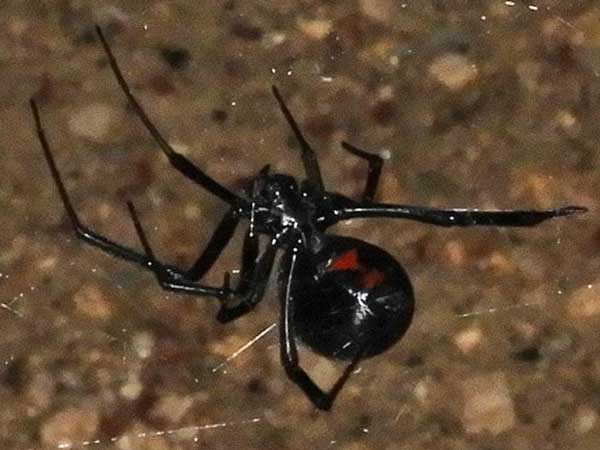Western Black Widow
Latrodectus hesperus

Nocturnally active at a recreation area north of Carefree, Tonto National Forest, Maricopa Co., Arizona, USA. 4 Aug. 2019.
Theridiidae -- Tangled Web Spider Family
This glossy black spider normally sits in its web with the underside of the abdomen facing up. This is where the bright red warning mark is displayed. Adult females are so marked, but young and males may have multi-colored bands of orange, red, and white. These spiders are more common around human habitations where their usual prey abound. Picnic tables mean food scraps, which draws scavengers of many kinds.
The webs are made of strong, sticky silk that extend to the ground forming a kind of invisible fence that crawling insects will encounter. During the day these spiders hide inside a secure crevice where their own predators cannot reach. The spiders emerge at night and stand ready to drop down to the ground level when crawling insects encounter one of the sticky strands. The prey is quickly hoisted up and a venomous bite delivered. Additional silk keeps the prey secure and the venom subdues it shortly. These spiders are smaller than other widow species and medically significant bites are rare. Children should be discouraged from picking them up. Gloves should be worn when cleaning out debris from dark hiding places.